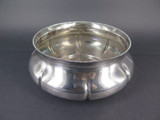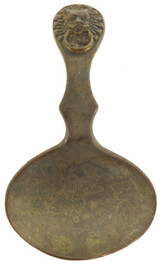Description
Antique colonial revival tea caddy canister by American silverplate manufacturer Barbour Silver Co. This exquisite silverplate caddy from the late 1800s showcases a Colonial Revival design, perfect for adding a touch of European elegance to any collection.
Hallmarked with a windmill and pipes to the bottom
Size 11cm high x 8cm wide x 5.5cm deep
The colonial revival, commencing with the Centennial Exhibition in Philadelphia in 1876, sparked a huge interest in all things colonial--which meant much 18th-century design from Europe. New Yorkers in particular focused on Dutch design, and Dutch silver novelties flooded into upper-class American homes from 1880 on. The Newark Museum owns many such things, including silver miniature windmills of great craftsmanship, owned by a Newark brother and sister who were great collectors. But Dutch motifs, on all sorts of decorative arts, and the blue and white color scheme of Delft ceramics, became a leitmotif of the New York Colonial revival.
Barbour Silver Company of Hartford CT.
Were founded in 1892 by Samuel Barbour, Isaac Steane, and J. L. Daigleish. They later became one of the original partners in the formation of International Silver, moving to Meriden CT and taking over the factories of the old Meriden Silver Plate Co there.



















